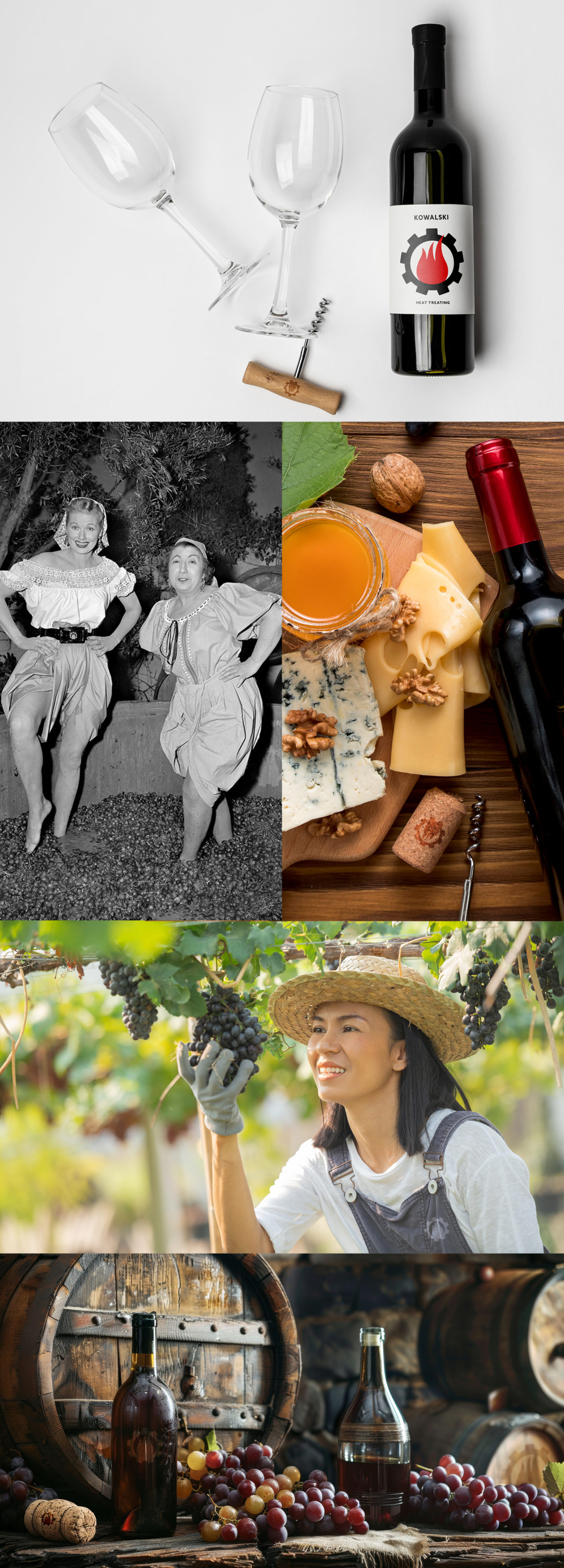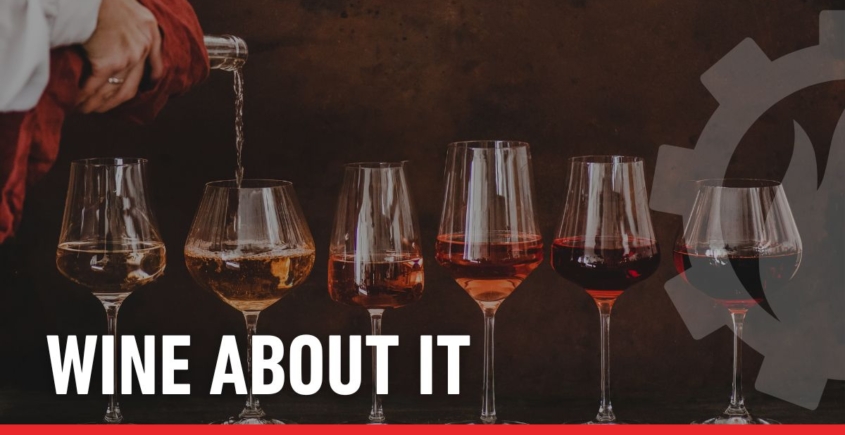Wine About It
As summer gradually draws to a close, farmers nationwide are focused on harvesting – major crops like corn and grains, soybeans, all sorts of apples and of course grapes, not only here in the US, but throughout the world. This annual ritual marks the culmination of months of careful cultivation and anticipation, marked by intensive activity in vineyards, where growers aim to harvest grapes at their absolute peak ripeness. Knowing when things are “just right” takes experience, science and expertise, to be sure the grapes have fully developed and can become part of a wonderful harvest. (Talk about a PIA (Pain in the @%$) Job! – wow. Here at KHT, so many of our processes involve the right temperature and the right timing – come to think of it, I’m sort of a thermal processing “vigneron”, carefully managing time and temperature to make your parts we process “great”… (wonder if my wife Jackie agrees?). I dug into the fall harvest of grapes and found some really fun and interesting facts and trivia I think you’ll enjoy. For those reading after hours, be sure to pour yourself a glass of wine, and celebrate along with the wonderful people and industry that makes this possible. Enjoy!

The U.S. produces around 7 million tons of grapes annually, the fourth largest grape producer globally, followed by Italy, France, and Spain, with California accounting for about 90% of this production. Grapes are grown on approximately 1 million acres of land across the U.S., with a significant concentration in California’s wine regions.
Grapes were first cultivated in North America by Native Americans long before European settlers arrived. Spanish missionaries introduced European grape varieties to California in the 18th century, laying the foundation for the state’s wine industry.
The wine industry is a major economic driver in the U.S., generating over $220 billion annually and supporting nearly 1 million jobs. According to the Wines Vines Analytics Winery Database, the United States is now home to 11,691 wineries, which is nearly 400 more than in 2021 – (dats a lot of squishin’)
Vineyard management involves careful planning and year-round maintenance, including pruning, canopy management, and pest control, to ensure healthy grapevines and optimal fruit quality. The timing of the harvest is crucial. Grapes are harvested when they reach the desired balance of sugar, acidity, and tannins. This timing varies by grape variety and the style of wine being produced.
Many vineyards are adopting sustainable practices, such as organic farming, biodynamic farming, and the use of cover crops to improve soil health and biodiversity.
The fall grape harvest is a critical period for grape growers and winemakers, as the quality of the harvest directly influences the quality of the wine produced.
There are several factors that contribute to the ripeness of the grape. As the grapes go through veraison, sugars in the grapes will continue to rise as acid levels fall. The balance between sugar (as well as the potential alcohol level) and acids is considered one of the most critical aspects of producing quality wine so both the must weight and “total acidity,” as well as the pH of the grapes, are evaluated to determine ripeness.
The timing of the grape harvest is critical to the wine’s flavor and character. Winemakers meticulously monitor the sugar, acid, and pH levels of the grapes to determine the ideal moment for picking. This balance affects everything from the wine’s sweetness to its overall structure, ensuring a harmonious symphony of flavors in every bottle.
Cooler temperatures during the night preserve the grapes’ freshness and acidity, crucial for crafting high-quality wines. Harvesting under the moonlight minimizes oxidation and reduces the chances of unwanted fermentation before the grapes reach the winery.
Typically wine harvest begins in August and runs through October. The warm autumn months provide weather that is just right for the harvesting of grapes. As August comes around, grapes begin to ripen, undergoing a process known as veraison. The fruit starts to appear more like how we imagine grapes. Green grapes turn to gold and even red, while previously red grapes turn to a deep purple color. While the new colors are the most obvious change, grapes also increase in size and become softer.
The style of wine made from the grapes also affects the picking process. Sparkling wines require grapes with higher acidity that are picked in early August. Grapes for white wines are the next to be selected. Grapes for red wines are the last to be chosen as they take longer to mature. The picking process for these grapes begins in October or even early November, depending on weather and growing conditions.
Hand-picking is the traditional method for harvesting wine grapes. In this process, workers go through the rows of a vineyard, picking grapes bunch by bunch. They cut grapes off the vine with knives or sharp clippers and drop them into containers located throughout the rows of vines. Hand harvesting grapes can often produce better results.
Machine harvesting is the alternative method to picking by hand. Machine picking was introduced in the 1960s and refers to a machine that travels through vineyards over the rows while shaking the fruit off. Machine picking has taken the wine industry to new heights and is one of the main grape harvesting tools that makes affordable and delicious wine accessible. When vineyards use grape harvesting machines, grapes can go from being picked to being chilled much more quickly than if they were hand-picked. See how the machines actually work!
Even if climate and vineyard management has been ideal, other factors may prevent full and even ripeness. Among the clusters of a grapevine, individual berries may not all ripen at the same pace. This problem, commonly known as millerandage, could occur because of poor weather during the flowering period of the grape but can also be caused by soil deficient in various nutrients such as boron, an attack of various grapevine ailments such as the grapevine fanleaf virus or a number of other factors that may contribute to incomplete plant fertilization.
(of course, I had to include the classic Lucy scene) – Enjoy!
After grapes are harvested, they undergo the “crush” process, where the skins are broken to release the juice inside. This juice is the foundation for winemaking. The scene can be chaotic and exhilarating, as winemakers work quickly to extract the juice while preserving its integrity.
The “magic” happens during fermentation, when yeast consumes the grape sugars and converts them into alcohol and carbon dioxide. The process produces heat, and winemakers carefully control the temperature to influence the wine’s aroma and flavor. This delicate dance of science and art can last from days to weeks, depending on the style of wine being crafted.
The color of wine grapes doesn’t always correspond to the final wine’s color. For instance, white wines can be produced from red or pink grapes. The color extraction happens during fermentation, as the grape skins release their pigments into the juice. (A Rosé would be made from a red grape with the skins being removed early. So, a white wine made from red grapes would have the skins removed before fermentation).






Leave a Reply
Want to join the discussion?Feel free to contribute!